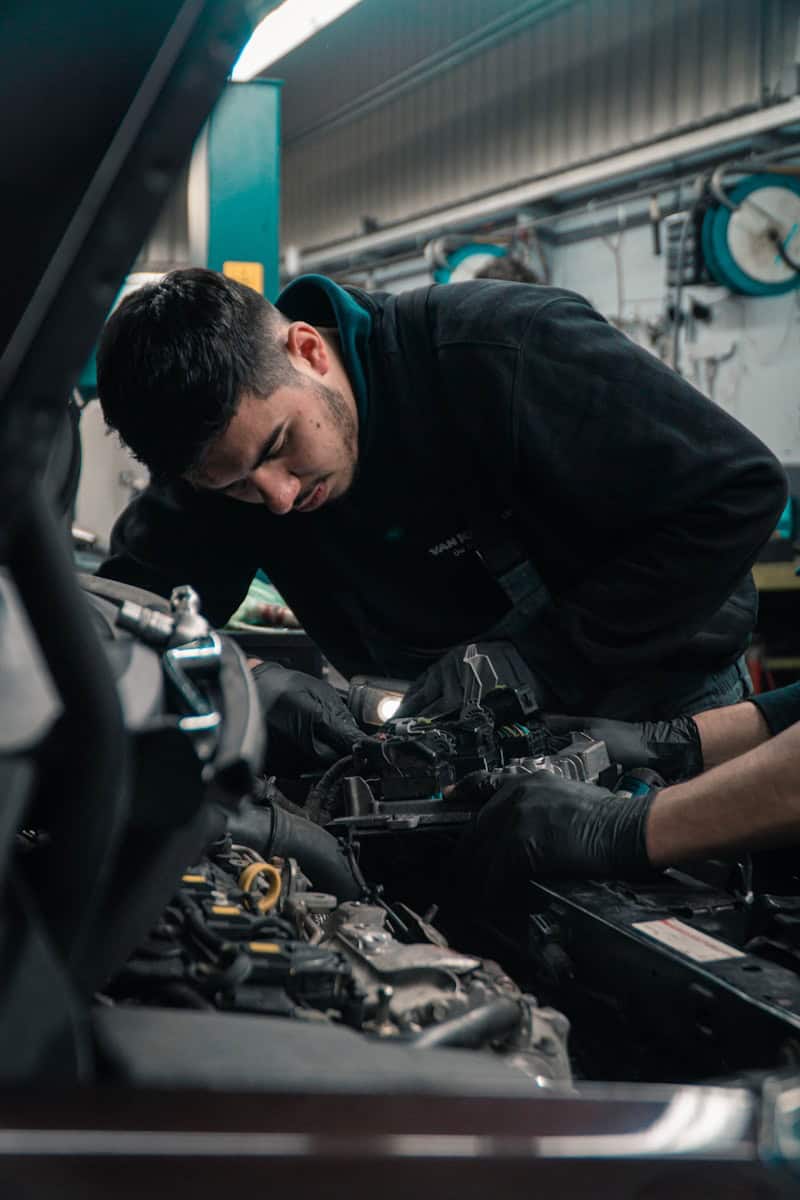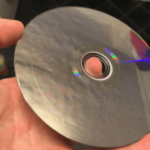When the check engine light comes on in a car, it could indicate many things. One of the common reasons for it could be a diagnostic trouble code, known as the P0302 engine code. This code points out that the second cylinder of the car’s engine is not functioning correctly. Cylinders are the vital parts of the engine where fuel and air mix and burn to produce power to move the car. An engine misfire in the second cylinder is indicated by the P0302 code. An engine misfire happens when the fuel in the cylinder doesn’t ignite correctly, causing the car to run poorly. If left unchecked, it can also cause damage to the engine. Mechanics inspect the P0302 code to identify the reason for the misfire in the second cylinder. They may check various parts, such as spark plugs, fuel injectors, and ignition coils, which are responsible for igniting the fuel and ensuring the smooth functioning of the engine. If any of these parts malfunction, the engine won’t run as it should.
Understanding & Troubleshooting Engine Code P0302
If your car’s check engine light blinks on and you see the code P0302 after a scan, it means there’s a problem with cylinder 2. This code indicates a cylinder misfire, which can lead to rough running, reduced power, and potential engine damage if left unaddressed. Here’s what you need to know:
What Does Code P0302 Mean?
The code P0302 specifically signifies “Cylinder 2 Misfire Detected.” A misfire occurs when the air-fuel mixture in one of your engine’s cylinders fails to ignite properly.
Common Causes of a P0302 Engine Code
Several issues can cause a cylinder 2 misfire. Some of the most frequent culprits include:
- Faulty Spark Plugs: Worn or damaged spark plugs can prevent a strong spark, leading to a misfire.
- Ignition Coil Issues: Malfunctioning ignition coils can’t deliver enough voltage to the spark plugs.
- Fuel Injector Problems: Clogged, leaking, or faulty fuel injectors can disrupt the fuel delivery to cylinder 2.
- Vacuum Leaks: Air leaks in the engine can upset the air-fuel ratio, causing misfires.
- Mechanical Issues: Less common but possible are problems like worn piston rings, leaky valves, or a blown head gasket.
Symptoms of a P0302 Code
Besides the check engine light, you might notice these symptoms along with a P0302 code:
- Rough idling
- Engine shaking or vibrations
- Decrease in fuel economy
- Loss of power
- Hesitation during acceleration
Troubleshooting a P0302 Engine Code
Here’s a simplified troubleshooting guide:
- Check the Basics: Start by examining the spark plugs in cylinder 2 for wear, damage, or incorrect gapping.
- Swap Components: Try swapping the ignition coil and spark plug from cylinder 2 with those from a working cylinder. If the misfire moves to the new cylinder, you’ve likely found the faulty component.
- Inspect Wiring & Fuel Injectors: Ensure the wiring to the ignition coil and fuel injector is intact. Listen for clicking sounds from the fuel injector, indicating it’s working.
- Further Diagnosis: If the problem persists, further diagnosis might be needed, including a compression test, inspection for vacuum leaks, or professional assistance.
Table: Engine Code P0302
| Issue | Potential Fix |
|---|---|
| Faulty spark plugs | Replace spark plugs |
| Malfunctioning ignition coil | Replace ignition coil |
| Clogged or faulty fuel injector | Clean or replace the fuel injector |
| Vacuum leaks | Inspect and fix any vacuum leaks |
| Mechanical problems | Seek professional diagnosis and repair |
Important Note
It’s best to address a P0302 code promptly. A misfiring engine can cause additional strain and potentially lead to costly damage.
Diagnosing P0302 Trouble Code
When a P0302 code appears, it means cylinder 2 in your car’s engine is not firing right. This can cause the engine to run poorly. Here’s how to check the common causes step by step.
Assessing Ignition System Components
First, check the spark plugs and ignition coils for cylinder 2. Bad spark plugs or faulty coils often cause misfires.
- Spark Plugs: Pull them out and look for damage or wear. Replace them if needed.
- Ignition Coils: Inspect for signs of failure like cracks or burns. Test with a multimeter and replace if faulty.
Evaluating Fuel System Issues
Next, ensure the fuel system works properly. Problems here can also lead to a P0302 code.
- Fuel Injectors: Listen for clicking sounds to see if the injector is working. A bad fuel injector can stop fuel from getting to the engine.
- Fuel Pressure: Use a gauge to check the pressure. Low pressure might mean a clogged filter or a pump issue.
Inspecting Mechanical Engine Problems
Sometimes, the issue is mechanical within the engine itself.
- Compression: Perform a compression test. Low compression may be due to leaks or engine wear.
- Timing: Ensure the timing belt or chain is set right. Wrong timing can lead to misfires.
Interpreting Freeze Frame Data and Sensor Readings
Finally, use a scanner to check freeze frame data and sensors.
- Data: Look at this data to see what the engine was doing when the misfire happened.
- Sensors: Check the crankshaft and camshaft position sensors. These sensors help control the engine’s timing and work. If they fail, they can cause a P0302 code.
Resolving Cylinder 2 Misfire
A misfiring cylinder can make a car’s engine run rough. This section explains how to fix a misfire in cylinder 2. Simple steps and checks can often find and fix the cause.
Correcting Ignition Issues
Spark Plug Replacement:
Check spark plugs first. If they are dirty or worn out, they need replacing. Good spark plugs help make sure the engine runs smooth.
Coil Pack and Wires:
After spark plugs, inspect the coil pack and spark plug wires. If these parts are faulty, the engine might not get enough spark. Replace any damaged parts.
Repairing Fuel System Faults
Fuel Filter and Fuel Pump:
Ensure the fuel system flows well. Replace the fuel filter if it’s clogged. A proper fuel pump sends fuel to the engine right.
Engine Control Module (ECM):
The ECM plays a huge part in running the fuel system. If it shows trouble codes, it may need a checkup or repair.
Addressing Intake and Exhaust Manifold Defects
Check for Vacuum Leaks:
Leaks in the intake manifold could lead to a misfire. Look for hissing sounds or signs of damage that can point to leaks.
Examine the Exhaust Manifold:
A crack in the exhaust manifold affects engine performance. If you find a crack, repair it to fix the misfire.
Restoring Proper Engine Compression
Compression Test:
A compression test can find engine issues. Low compression might mean problems with valves, piston rings, or the head gasket.
Fix Leaks:
Repair any leaks to stop misfires. Leaking head gaskets and poor valves can cause misfires and need fixing to restore engine performance.
Simple checks usually spot the cause of a misfire in cylinder 2. Proper repairs can bring your engine back to a good state.
Frequently Asked Questions
This section answers common questions about the P0302 code. It helps you understand and fix a misfire in cylinder 2.
What steps should I follow to diagnose and resolve a cylinder 2 misfire?
First, check the spark plug and ignition coil in cylinder 2. If these parts are fine, inspect the fuel injector and compression system. These steps can help find the problem.
Is it safe to keep driving a vehicle displaying a cylinder 2 misfire warning?
No, it is not. Driving with a misfire can damage the engine. It’s best to fix the issue quickly.
What are common causes for a cylinder 2 misfire in different car makes, such as Ford, Nissan, and Chevy?
In any car like Ford, Nissan, or Chevy, spark plugs, ignition coils, or fuel issues often cause misfires. It can also be due to poor compression or a bad sensor.
How much can I expect to pay for cylinder 2 misfire repairs?
The cost to fix a misfire can range from $100 to $1000. It depends on what part needs repair. Spark plug replacement is cheaper than fixing a fuel system problem.
How can I determine whether a P0302 code is due to a faulty ignition coil or a compromised spark plug?
To check, swap the ignition coil and spark plug from cylinder 2 with another cylinder. If the misfire moves to the new cylinder, the part you moved is the problem.
What could specifically trigger a misfire in cylinder number 2?
A misfire in cylinder 2 can happen if the spark plug fails or the ignition coil is faulty. It can also be caused by a bad fuel injector or low compression in the cylinder.







